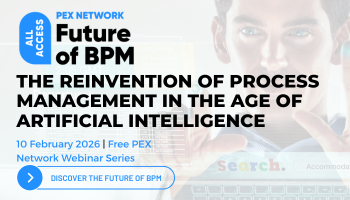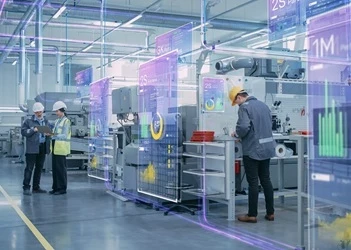Three companies using microservices
Learn how these three global businesses have increased agility through the application of microservices
Add bookmark
Today, we are seeing much discussion about the advantages of microservices and many process excellence professionals are wondering if a move away from monolithic architecture may be prudent. While this increased focus on microservices is somewhat new, the concept of microservices has been around for some time.
In this article we look at some of the first, and largest, adopters of microservices and how the switch has impacted these businesses.
Netflix was an early adopter of microservices architecture
One of the first businesses to begin championing the benefits of microservices architectures was Netflix, which began its journey back in 2008. When a power outage at one of its data centers shut down what was then a DVD renting service for three days, the business realized it was necessary to migrate to what it considered a more reliable infrastructure.
Following this incident, Netflix made two critical decisions. The first was to migrate its data centers to a public cloud and the second was to switch from a monolithic enterprise architecture to a microservices one which encompasses individual and separate software components.
Microservices have offered Netflix a benefit known as ‘separation of concerns’. Under a monolithic architecture, software and applications are all connected. An issue with one often requires reworking of the entire system and the entangled nature of the architecture compounds issues with multiple systems.
Under a microservices architecture, these issues have become separate at Netflix and can be tackled individually. This means the streaming company no longer has to worry about its entire business going down due to one data center issue.
Join the PEX Network community

Don't miss any news, updates or insider tips from PEX Network by getting them delivered to your inbox. Sign up to our newsletter and join our community of experts.
Learn MoreSpotify applies microservices for independent scaling
Spotify is another business which has been utilizing microservices. Speaking at GOTO Berlin back in 2015, Kevin Goldsmith, former vice-president of engineering at Spotify, discussed the business’ use of microservices to break down architecture and innovate.
“You have to build your system in a way that you can scale independently, for instance, by structuring your application in loosely coupled parts. Building microservices helps Spotify to have autonomous teams, since the team can own the service themselves.”
Today, Spotify's microservices architecture has developed significantly, with thousands of microservices running in production. Due to the separate and independent nature of software and applications, Spotify has enhanced its ability to innovate.
Goldsmith noted that developers are able to deploy the microservices themselves, take ownership over them and continue to enhance them based on their intrinsic understanding of the services they themselves have developed.
eBay offers hundreds of thousands of independent services
eBay initially operated with a monolithic architecture but made the switch to microservices in 2011 in response to an issue it was experiencing with its architecture review board.
The board had become a bottleneck, with most initiatives rejected due to the window of opportunity having passed by the time the extensive review has been conducted. Under the new model, the review of new enterprise architecture initiatives is much quicker since only the individual service needs to be reviewed. The board does not need to consider how it impacts other services.
eBay is today one of the leaders in microservices application following this rework of its architecture, managing thousands of independent software and applications that all work together.
The window of opportunity for implementing these initiatives has also been made much larger by the new architecture, as implementation of segmented services is far quicker due to the elimination of the need to rework existing systems, since they are not reliant on each other.
All Access: Future of BPM 2026

You asked, and we listened. Business process management (BPM) remains the cornerstone technology for driving organizational transformation, according to the survey results featured in the latest PEX Report. As we look toward 2026 and beyond, generative AI, agentic AI, and intelligent process orchestration are redefining how processes are designed, executed, and optimized. BPM is your key to adapting swiftly and effectively in this new era.
PEX Network is bringing together industry leaders, technology innovators, and thought leaders to answer your biggest questions and explore the advancements reshaping business today. And you're invited. Register for free to save your spot now!
Register Now
























